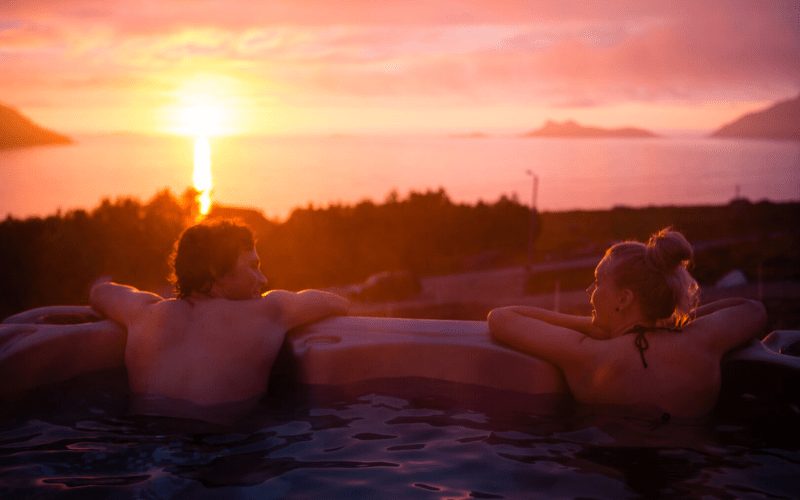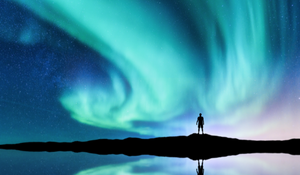7 Countries and Countless Fun Facts: Welcome to the Nordics!
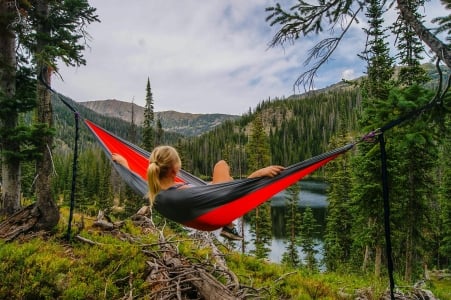
Situated in Northern Europe, the mesmerizing Nordic Region not only boasts spectacular nature and award-winning natural phenomena, it offers otherworldly landmarks, an abundance of culture, ancient historical mythology, ever-lasting memories and a manifest of fun facts.
Monstrous glaciers, erupting geysers, breathtaking fjords, steaming hot springs, lakes, beaches, volcanoes, and rich fauna glaze the Nordics and we are proud to call it our home. Also, with distinct regions situated well within the Auroral Oval, the Northern Lights paint the nighttime skies and the Midnight Sun lightens the summer.
We want to share the love with you and so we have drawn together some fun facts that you may not have known about our glorious region. Sit back, relax and enjoy.
Welcome to the Nordics!
The Nordic Region in a Nutshell
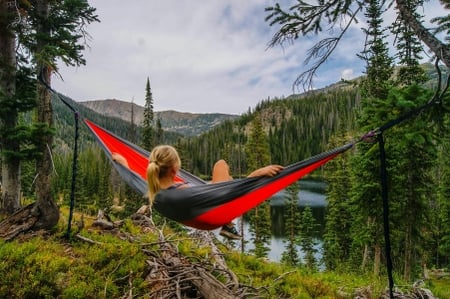
Relax in the great outdoor nature in the Nordics
The Nordics are known for having a long history as a cultural community whilst hosting such beautiful, pristine scenery and diverse ecosystems. Nature is a central feature of everyday life for many of those in the Nordic region and this ideology of embracing the outdoors has played an essential part in forming the Nordics' national identity.
Did you know that the Nordic countries are affiliated with the Nordic Passport Union, the Council of Europe, the EEA, the UN, and the Schengen Treaty? Let's continue; despite Denmark, Iceland, and Norway being members of NATO; Finland and Sweden are not. Likewise, where Iceland and Norway are not European Union members; Sweden, Denmark and Finland are.
Let's keep it sweet and simple shall we? Another interesting achievement the Nordic region can bring home is that it includes five of the world's top ten happiest countries: Finland, Denmark, Iceland, Norway and Sweden. Now that is something to shout about!
The Nordics are an incomparable region with endless possibilities to explore, adventure and learn. We are proud of our Arctic region.
Nordics vs. Scandinavia
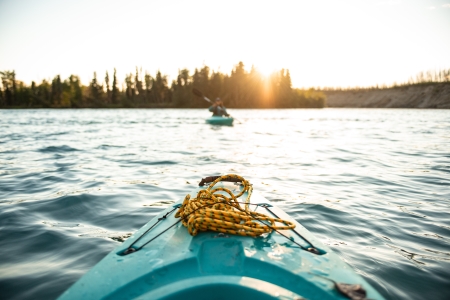
Spend an afternoon on the water
Primarily, all Scandinavian countries are Nordic countries too, however, not all Nordic countries are Scandinavian countries.
Scandinavia is a subregion in northern Europe and consists of the Kingdoms of Sweden, Norway, and Denmark. Whereas, the Nordic region is commonly associated with Sweden, Norway, Denmark, Finland, Iceland, Greenland and the Faroe Islands.
Apart from the geographical differences, the other key difference between the Nordics and Scandinavia is their language. There are similarities between the Danish, Norwegians, and Swedes in terms of writing. Whereas, the Icelandic and Faroese belong to a similar language group called North Germanic or Scandinavian. On the other hand, the Sámi and the Finnish languages belong to a different group altogether.
It has been discussed that Finland should be added as a Scandinavian country based on its geographical position. Likewise, Iceland and the Faroe Islands speak in the same language group as the official Scandinavian countries.
The Flags of the Nordic Countries
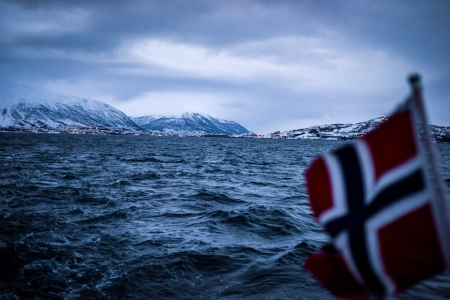
There are similarities between the Nordic flags
All the Nordic countries and territories share similarities in flag designs. Based on the principles of the Danish flag - the Dannebrog, they display an off-centre cross with an intersection closer to the staff. Their individual designs generally include formats of a Nordic/Scandinavian cross.
There are exceptions, though. The Greenland and Sápmi flags have slight differences as they are without the Nordic cross but feature an off-centre circle in the crosses' place.
Flags are used to represent various entities in the Nordics, such as the state flags, naval and war flags, royal flags, presidential flags, ethnic flags, sports societies, and more.
Did you know? A variety of Nordic cross flags are also found outside of the Nordic countries, such as a proposed flag for Estonia, the flag of Bayamón in Puerto Rico, the Scottish Isle of Skye's flag, and so on. The UK and Scotland have also used the Nordic cross in some of their flags to reflect the Scandinavian heritage introduced to the British Isles during the Viking Age.
Are you tempted to research them now?
Sweden
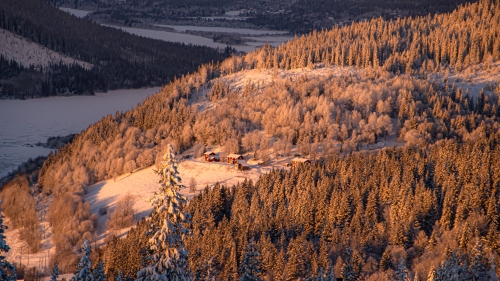
Skiing in Sweden is popular in the mountains
Sweden, officially the Kingdom of Sweden, is rich in diverse ecosystems and wildlife. As a country of rural tranquillity, boundless forests, frozen tundra and miles and miles of endless wilderness, Sweden is an adventurer's dream.
Here are some fun facts that you may not have known.
- It is the largest country in northern Europe and 63% of the land is covered by forestry and it is home to over 95,500+ lakes.
- Sweden has a total population of 20,000 Sami people who live and breathe their ancient traditions.
- There are approximately 300,000 – 400,000 moose freely roaming in the woods.
- Alongside moose, there are reindeer, deer, birdlife and such predators as the bear, wolves, lynx, and wolverine.
- It is the only country in the world where donations stand for more than 1% of the GDP and notably recycle 99% of their waste.
Our favourite fun fact
Along with Iceland, Finland, and Norway, Sweden has a general public right called the 'freedom to roam' or 'everyman's right'. This is the right to access certain public or privately owned land, rivers, and lakes for recreation and exercise use.
Welcome to our Sweden.
Norway
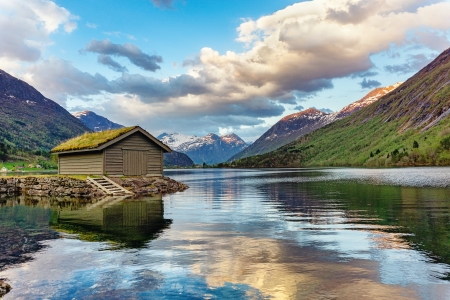
Enjoy the tranquillity of Norway's mighty fjords
Officially titled the Kingdom of Norway, including the remote island of Jan Mayen and the archipelago of Svalbard, Norway is a land of mesmerizing beauty. Engulfed by monstrous fjords, overlooking mountains, incredible waterways and vast oceans, Norway's coastline has been compared to offering some of the most visually inspiring sceneries in the world.
- Fjord Norway has the highest concentration of fjords in the world. Two of which feature in the UNESCO World Heritage List: the Geiranger Fjord and the Nærøy fjord.
- The largest herd of wild reindeer in Europe can be found in Norway. The herds roam Hardangervidda National Park which includes rich valleys, immense plateaus, mountainous terrain, glaciers, waterfalls and breathtaking fjords.
- Norway is home to HELL. Hell is actually the name of a small village close to Trondheim's international airport.
- Half the world’s Sami population live in Northern Norway.
- Jan Mayen is a volcanic island in the Arctic Ocean. It is classified under Norwegian sovereignty and has no permanent population.
Our favourite fun fact
Norway’s flag is otherwise known as 'the mother of all flags'. You can see several other national flags marked out within it. These flags are Indonesia, Poland, Malta GC, Finland, France, The Netherlands and Thailand.
Welcome to our Norway.
Finland

A dazzling Northern Lights display covers Finland's sky
Titled the 'Happiest Country in the World', the Republic of Finland is home to approximately 5.5 million people. That's a lot of happiness! Known also as the perfect winter wonderland due to the Northern Lights, Santa Claus and its Christmas delights. Finland is a real wintertime utopia.
- Described as 'the land of a thousand lakes', Finland actually hosts 187,888 lakes.
- It is also home to 179,000 islands. Imagine exploring those under the Midnight Sun.
- The Finnish terrain is covered by 74% forestry, making it the highest forest percentage than any other European country.
- As part of their national identity, the Finns love a sauna. It is said that there are more saunas than there are cars in Finland, with a total of 3million.
- The Finnish capital - Rovaniemi, on the Arctic Circle, is the most popular gateway to the north and home to the one and only Mr Santa Claus.
Our favourite fun fact
Finland was the first European country to give all women the right to vote. It may not come as a huge surprise in this day and age, but dating back to 1906, it was a vital step towards equality.
Welcome to our Finland.
Iceland

Mountains and Icelandic horses are part of Iceland's identity
Iceland is the most sparsely populated European country. Known as 'The Land of Fire and Ice,' it is filled with glaciers, volcanoes, black beaches, roaring waterfalls, hot springs and beautiful mountain ranges. In short, stunningly beautiful nature.
- Iceland is amongst the most unique countries in Europe due to its topography and natural phenomena, offering an abundance of wildlife, birdlife and unique natural phenomena.
- The Icelandic horses are unique to Iceland in the fact that they are direct descendants of the horses the Vikings first brought over from mainland Europe. Once a horse leaves Iceland, it is not able to return.
- More than two-thirds of the Icelandic population lives in its capital city, Reykjavík.
- Over 10% of Iceland's landmass is covered by glaciers and with 30 active volcanic systems, Iceland is close to the top of volcanic activity in the world.
- Iceland is one of the most eco-friendly countries globally, as approximately 85% of its electricity is generated from domestically produced renewable energy sources.
Our favourite fun fact
Iceland is home to the very first parliament grounds in Europe. In the year 930 AD, the first Parliament met in Iceland in what is today known as Þingvellir National Park and rightly so, attracts visitors all year round.
Welcome to our Iceland.
Denmark

Vibrant cobbled streets filled with street art and culture can be found in Denmark
Denmark itself is a relatively small country, however, the Kingdom of Denmark's entire territory is much larger. The country is known for its new Nordic cuisine and exquisite, timeless design. Filled with scenic towns, superb ancient architecture, vibrant local culture and the nature of National Parks, it's a Nordic dream destination.
- Denmark is built up of 444 islands, though only 76 of them are populated. One of which is Greenland, the autonomous territory, and not forgetting the Faroe Islands.
- With more than 12,000 km of cycle tracks and lanes, the Danes have a rich biking culture. Even so that approximately 75% still cycle throughout winter.
- The city of Copenhagen is the most visited city in Scandinavia and attracts around 30 million travellers a year.
- First acknowledged in 1219, the Danish flag 'Dannebrog' holds the Guinness World Record for being the oldest continuously used national flag.
- Denmark is leading the charge on producing and exporting wind turbines and therefore, 41% of the energy in Denmark is produced by wind.
Our favourite fun fact
Denmark ranks as the 130th smallest country in the world – out of 195 countries. However, if you count Greenland also, then Denmark becomes the 12th largest country in the world. Surprising isn't it?
Welcome to our Denmark.
Greenland
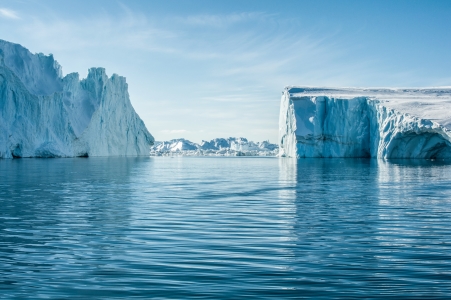
Have you ever seen so much ice than in Greenland?
Greenland, with just under 60,000 inhabitants, is the least densely populated region in the world. Its landscape is characterized by large tundras and vast glaciers, covering 80% of the island in ice, also known as the 'icecap'. Greenland is also a popular place to witness the wonders of the Northern Lights.
- A third of the population are living in the capital Nuuk.
- The variety of wildlife is incredible and consists of whales, seals, polar bears, arctic foxes, musk oxen, reindeers, and eagles to name a few.
- Geographically speaking, the country is a part of North America but politically is a member of Europe.
- The primary sources of income for the inhabitants of Greenland are from fishing industries and grants from Denmark.
- The words 'igloo' and 'kayak' are Greenlandic and have then been adopted in other languages.
Our favourite fun fact
Greenland's ice sheets are estimated to be between 400,000 - 800,000 years old. That's phenomenal!
Welcome to our Greenland.
The Faroe Islands
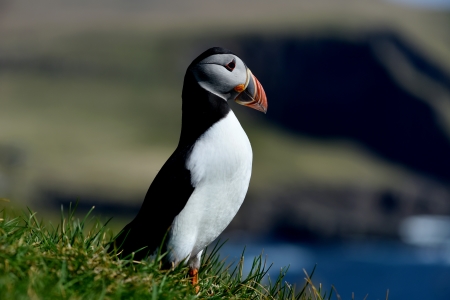
Wildlife is fluent in The Faroe Islands
The Faroe Islands are located in the North Atlantic, between Norway and Iceland, however, they are in fact a part of the Kingdom of Denmark. The islands offer an unparalleled beauty of nature. The volcanic islands offer a picturesque view with iconic shorelines and the famous waterfall Mulafossur that streams over the cliffs of Vagar Island right into the ocean.
- There are an astonishing 80 nationalities within the Faroe Islands population.
- The Faroe Islands is one of the world’s leading nations in producing sustainable electricity with over 50% of the nation’s electricity deriving from renewable energy sources.
- They have an average lifespan of 82.6 years, ranking them 12th out of 186 countries worldwide.
- It is estimated that there are more sheep than people in the Faroe Islands with 70,000 sheep vs 50,000 people. With many of the population's houses having grass roofs, the sheep are used to mow the grass, not machines. Talk about going green!
- The Islands are home to approximately 110 different bird species, with the oystercatcher as their national bird, not the puffin as many may think.
Our favourite fun fact
During World War II, the Faroe Islands were occupied by the British military. During this time, approximately 170 marriages occurred between British soldiers and Faroese women. Can we say this is love at first sight?
Welcome to our Faroe Islands.
Svalbard
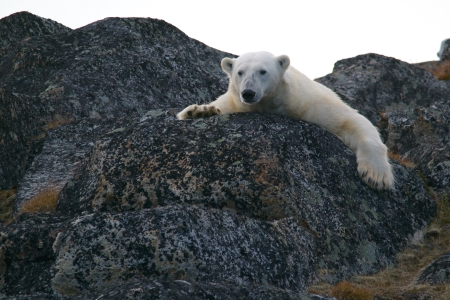
Would you like to live amongst Polar Bears in Svalbard?
Previously known as Spitzbergen, or Spitsbergen, Svalbard is a Norwegian archipelago situated in the Arctic Ocean. It contains infinite stretches of pure, untouched Arctic wilderness and with such grand mountains, blue sea ice and enormous glaciers, this picturesque landscape is rich with biodiversity and is a spectacle in all seasons.
- Svalbard is located just 1300 km from the North Pole, making it closer to there than Norway.
- It is home to the world's northernmost urban community, Longyearbyenthe.
- It is under Norwegian sovereignty and has been part of the Kingdom of Norway since 1925.
- The population of Svalbard is estimated to be around 2,400 people, with a majority being Norwegian and others originating from nearly 50 other countries.
- It is believed that everyone living in Svalbard must show respect for the grand nature they are surrounded by and appreciate that they are nothing but guests in the polar bears' realm.
Our favourite fun fact
The residents are built up of Arctic adventurers, researchers and family living a 'somewhat' normal everyday life. Apparently, it is not uncommon to see mothers with their prams carrying a rife on their back. Don't stress; it's a precaution in case of a polar bear attack.
Welcome to our Svalbard.
A Nordic dream destination
Our Nordic region is full of immense beauty and natural uniqueness that should be seen within a lifetime. Take a look at our product portfolio and destination portfolios to see what is on offer and the best ways to visit our exceptional countries.
Sign up for our email newsletter and plan your Nordic adventure today with Booknordics.com!
If you require any assistance, please contact our dedicated customer service team, who will be happy to help!
Welcome to our Nordics.
/BookNordics_Logo_CMYK_A_Po.jpg?width=450&height=155&name=BookNordics_Logo_CMYK_A_Po.jpg)
